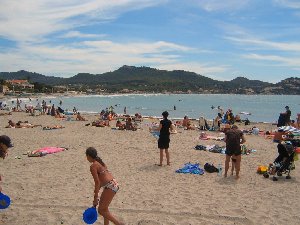Navigation
· Home
· Kontakt os
· Contact us
· Contactez-nous
· Beskrivelse
· Savoir plus
· Location
· Beliggenhed
· Le lieu
· Vid
· Video
· Autour de Villeneuve
· The vicinity
· A voir
· Ture og steder
· Things to see
· Climat
· Klima
· Climate
· Sport et loisirs
· Sport and leisure
· Culture and entertainment
· Kultur og oplevelser
· Culture et spectacles
· Cuisine et vins
· Food and wine
· Mad og vin
· Heading 2
 About me
About me

My name is Ulla Alsly. I look forward to telling you about our house in Provence.
Time of the day
Sign In
Articles Hierarchy
The vicinity
Our house is situated in a typical Provence landscape with tiny villages, hills, vineyards, and fruit and lavender fields. The Durance flows through the valley, creating a comfortable climate during the summer. Across the river lies the lavender fields of Valensole and the Italian Alps raise in the horizon. In this article we have compiled a short description of what, we think, is one of the most beautiful and most authentic regions of France. Many of the places are supplied with external links to further information or dedicated web sites about the places. Or try the maps of Provence here. They provide a good overview. We have also collected specific information on sport, entertainment and other events under the menu item ?Activities?.
Villeneuve (Vilo Novo de la Roco)
The house is located in the village of Villeneuve (Vilo Novo de la Roco in the native provencal language); 300 metres from the village centre. Villeneuve is located in the south-western part of the department Alpes de Haute-Provence (04), on the border of Vaucluse and Var. This particular area of Alpes de Haute-Provence is very typical provencal with vineyards and olive groves, contrary to the rest of the department, which is rather mountainous.
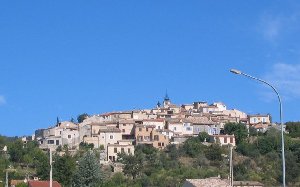
The village lies 400 metres above the sea and has 2.978 inhabitants, of which 92 per cent have their primary place of residence here. The climate is excellent with warm, dry summers. Annually, there are more than 300 days with sunny skies and only very little mistral. A weak breeze through the valley provides a very comfortable and not to hot climate. The village hosts a bakery, a butcher, a small supermarket, a pharmacy and two caf?s.
West and North of Villeneuve ? Luberon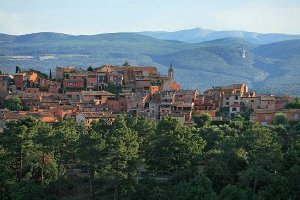 Villeneuve is the easternmost municipality in the Parc naturel r?gional du Luberon, that stretches all the way to Avignon in the west and Mirabeau in the south. Villeneuve is located in the part of the park know as 'Massif du Luberon oriental'. Luberon is known for its beautiful nature. The wide valley is bordered by low mountains on all sides and scattered with picturesque villages and remarkable nature. The author Peter Mayle lived here when he wrote his famous novel 'A year in Provence'.
Villeneuve is the easternmost municipality in the Parc naturel r?gional du Luberon, that stretches all the way to Avignon in the west and Mirabeau in the south. Villeneuve is located in the part of the park know as 'Massif du Luberon oriental'. Luberon is known for its beautiful nature. The wide valley is bordered by low mountains on all sides and scattered with picturesque villages and remarkable nature. The author Peter Mayle lived here when he wrote his famous novel 'A year in Provence'.
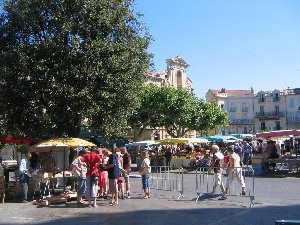 Forcalquier lies 10 kilometres west of Villeneuve. It is a typical Provence town with sycamores, caf?s, restaurants and shops. Over the town raises the majestic Citadel, dating from the 15th century.
Forcalquier lies 10 kilometres west of Villeneuve. It is a typical Provence town with sycamores, caf?s, restaurants and shops. Over the town raises the majestic Citadel, dating from the 15th century.
To the North we find the beautiful Pays du Forcalquier and Montagne de Lure. In the winter, there are good skiing possibilities here. Not far from Forcalquier lies one of Europes largest observatories in St. Michel-l'Observatoire. The location is specially chosen because the skies are among the clearest in Europe.
Durance
The Durance carries water from most of the Southern Alps and runs westward from Manosque onto Cavaillion where it merges into the Rh?ne. Or rather: it did, because today most of the water is diverted into canals producing vast amounts of electrical power for the French utility company Electricit? de France. Where the area previously was marked by massive flooding it is now one of the largest facilities in France for the production of green power.
South and west of Villeneuve ? Verdon
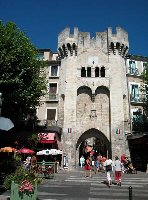 12 kilometres south of Villeneuve we find the larger town of Manosque with 20,000 inhabitants and all the shops you need, including several large 'Centre Commercial'.
12 kilometres south of Villeneuve we find the larger town of Manosque with 20,000 inhabitants and all the shops you need, including several large 'Centre Commercial'.
The medieval town centre has narrow, winding streets, most of them pedestrian zones, where fashion shops sides with butchers and antique galleries. You must try the local restaurants and caf?s too.
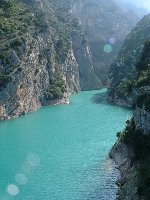 To the east stretches the impressive Parc naturel r?gional du Verdon with the famous Les Gorges du Verdon - the largest canyon in Europe. An absolute must for everyone.
To the east stretches the impressive Parc naturel r?gional du Verdon with the famous Les Gorges du Verdon - the largest canyon in Europe. An absolute must for everyone.
The river Verdon has many places for white water activities, including canoeing, kayak and rafting. At the end of the gorge is the beautiful lake Lac de Sainte Croix and the village of Moustiers Ste. Marie well known for its faience and porcelain.
South of Manosque the landscape widens as you enter the department of Bouches-du-Rh?ne with the wonderful towns Aix-en-Provence and Marseille, the beaches along the Mediterranean coast such as La Ciotat and Bandol og and the unique wetlands Camargue in the Rh?ne delta. Camargue is the only wetland in Europe where the wild Flamingos live in their natural habitat.
